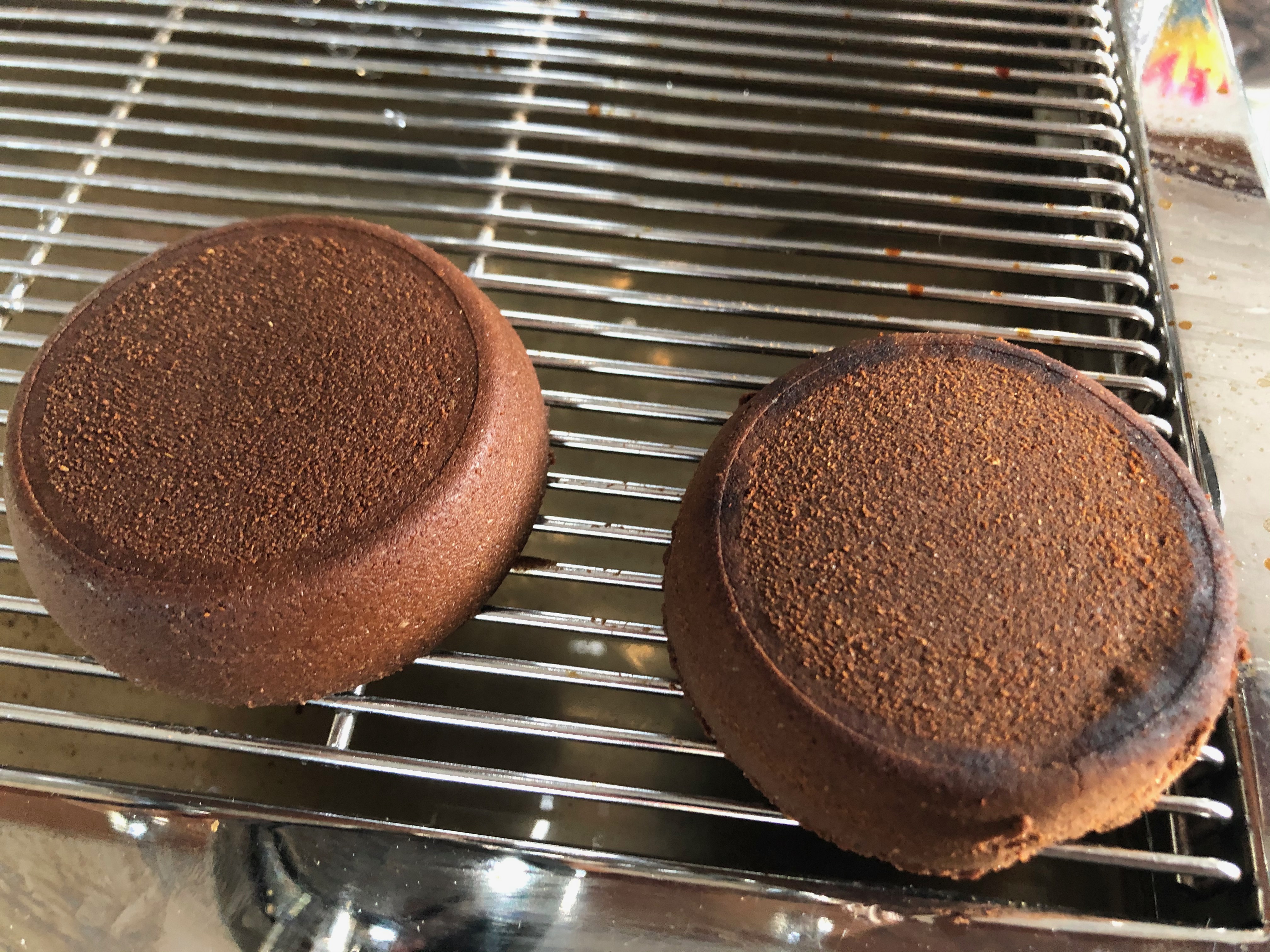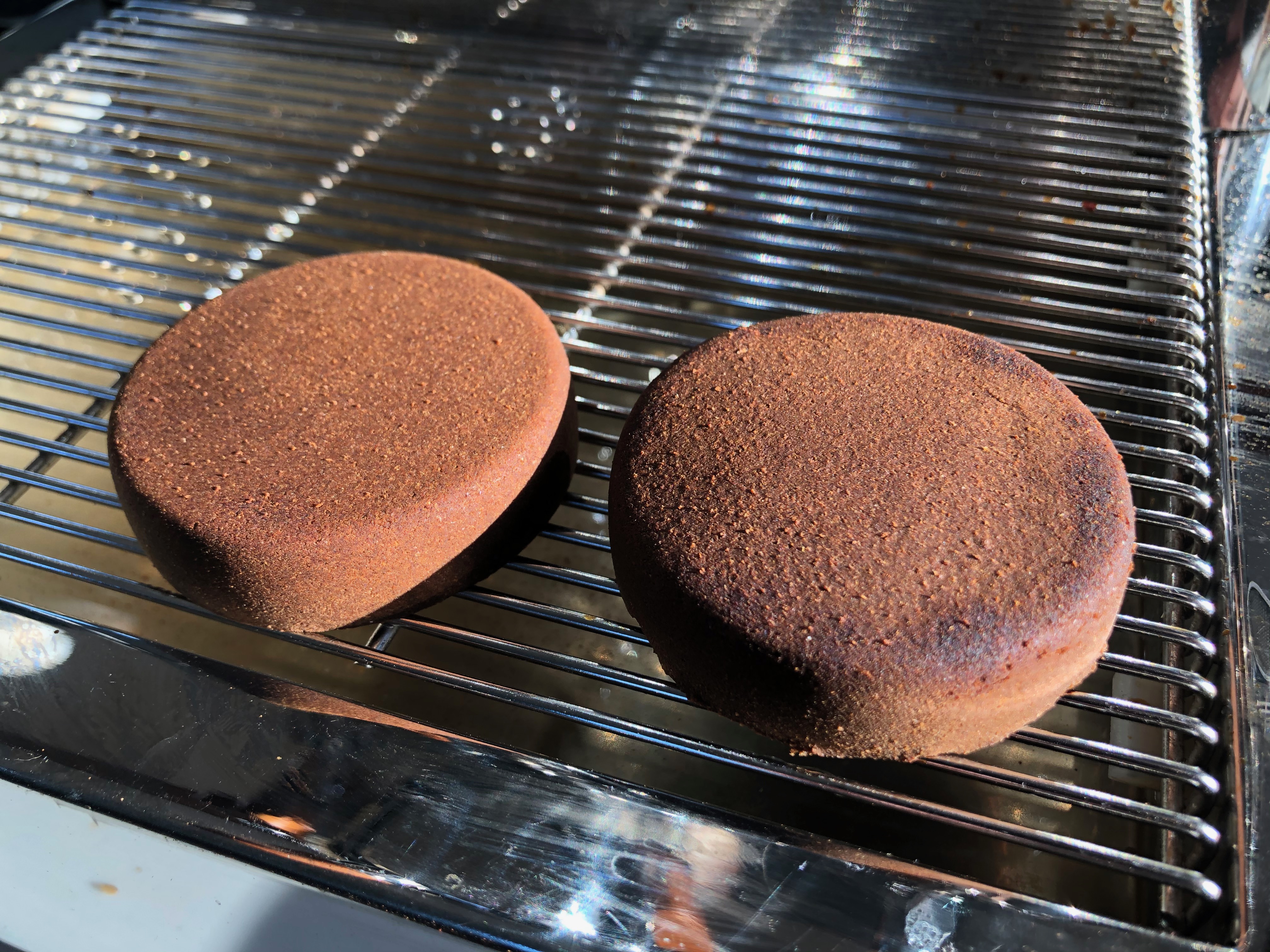What happens when we extract?
This is a bit of a loaded question, but I’ll do my best with it. It’s really easy to think that the coffee we make is going to be more or less the same, no matter how we make it. Maybe we wind up using a little more or less of the coffee, but it should all taste like coffee, right? While it’s simple and partially true to look at either the measured extraction yield or the evenness of the bottom of a puck and think that they’re the primary indicators of taste, there are other metrics we can observe and manipulate to quantify and ideally improve the quality of extraction and the resultant cup.
The levers we can pull
- Extraction yield - the percentage of the dry coffee that ends up being dissolved into your cup.
- TDS - Total dissolved solids, or the percentage of your wet cup of coffee that is made up of dissolved solids.
- Evenness of extraction - This is actually a likely misnomer, but it’s commonly used. Better said as the apparent evenness of extracted compounds as viewed on the bottom and in the cross section of a puck. Reading this particular tea leaf can be a bit tough, but darker spots are generally going to be areas retaining extractable compounds, lighter spots that are obviously wet are showing higher extracted areas, and dry areas never got extracted or extracted very poorly. There’s a subthought here on puck thickness that I’ll get into.
- Flow rate - We’ll cover why this matters later, but in this case this is the flow rate of water exiting the puck, not debit before the puck is loaded with pressure.
- Debit - The flow rate of water before pressure has built. Easiest to think about this as the fill rate.
- Pressure - I’m not going to go too far on this but there are some notes worth making about pressure.
- Temperature - The effective slurry temperature during the extraction, though this is normally ambiguated.
- Water composition - There are other pages talking specifically talking about water composition in coffee, but if you don’t believe it is changing the expression of flavor I’m going to ask you to try some experiments with distilled water and a sane espresso water like 20gh/90kh so you can note the changes to acid balance and flavor profiles.
- Roasting - Mentioned here because it matters, but I won’t disucss in detail.
Extraction yield
This is the simplest method we have of measuring what the result is when we make a coffee. In general I suggest you aim for a high and even extraction for almost all coffees. Please do note that ‘high’ is a much lower total extraction for something medium or darker. I suggest this for economic reasons (more extracted coffee is cheaper) but also because the high extraction coffee generally winds up nicely balanced and delicious. You may notice a point where you start to lose vibrancy, experience too much blending, or otherwise have a fall off in flavor. At that point you can focus on evenness which will likely push you higher without the negative impacts (a greater percentage of your coffee extracted at 25% gets you closer to 25% ey without having certain sections that are much higher.) I’d be doing a disservice if I didn’t say here that a refractometer can only measure refractive index and make an assumption about tds, and eventually ey. Because we don’t know what the compounds are in the cup this is a very limited tool for taste.
TDS
I think of TDS solely as a strength lever. If you want more strength at the same extraction, increase evenness. If you want more strength at the same flavor but you’re as even as you can be, you need to assess what you’re tasting and adjust from there.
I generally use ratio of dry coffee:finished coffee as a way to fix both my extraction yield, flavor balance, and strength. It’s my primary dialing point that I base all my other changes around.
Evenness of Extraction
Radial evenness is the most common issue skilled users have. If you knock a puck out and see a dark ring or dark spots on the bottom you’re experiencing this phenomenon. Edge flow where there are no basket holes is nearly always the biggest cause of radial unevenness, with a bottom filter being the easiest correction. Correcting this does increase edge flow and makes for a ‘donut’ start, which is a good thing. More solids and water are feeding into the edge holes than the center holes, so seeing flow start there is ideal. The corrections that i’ve used are top or bottom filters/puck screens, a coarser grind, a ‘less level’ puck prep method such as a center mound, or a different profile to improve evenness. Faster flow through the puck is almost always more even, and all of these create that except for the top screen and a center mound which both promote more flow relative to coffee at the edge. I strongly encourage users to improve radial evenness regardless of taste preference. The more consistent you can be here the more your other dialing parameters can be consistently applied.
Another variable that can be dialed to taste is vertical evenness through the puck. If you find that you’re a little too even in taste you can start to dose thicker and get a gradient of extraction through the puck. If you want to be more even than you’re managing a lower dose can help, but if you get too thin you start to have more radial evenness issues.
Since this isn’t a super commonly used measurement I’ve included visual references. Each of these examples shows a slightly coarser (10 microns of burr movement) shot on the left.


Flow Rate
Interestingly flow rate changes may not show much of an impact on measured extraction but show up clearly in taste.
Here’s where the magic really starts for me. Flow rate can improve evenness of extraction, but it also changes contact time and appears to change extraction rates of various compounds. Interesting tasting acids appear to extract better at fast rates, so if you’re looking for a vibrant front loaded acid profile at a high extraction dial that functional flow rate up! Want something a little more blended to turn that citrus and floral into the mango note on the bag? Maybe a slower flow and more contact time would be a good idea. I suggest taking a look at the profiling guide in the side bar for detailed notes on profiles and preinfusion.
Debit matters too here, but mainly for how it affects evenness. Our preinfusion stages should be viewed as ‘setting up’ the infusion stage. If you want fast flow you can dial that preinfusion to get you there!
Sometimes fast flow looks like it is channeling, but if it doesn’t taste astringent or bitter it is likely just a coffee particle plugging a basket hole or lower surface tension on the bottom of the basket because many of the solids are already in the cup. Expect fast extractions of light coffee to be pretty ugly on a bottomless but not crazy messy when done reasonably well.
Pressure
I don’t think pressure is a major lever here, but I’d be remiss if I didn’t mention a major deleterious effect. Pressure has an impact on evenness of extraction, even at pretty normal pressures. Consider keeping things closer to 6 bar to make your life easier. High pressure has a greater likelihood of actually channeling, which is bad. It also can create additional puck compression, slowing your flow. There are some interesting effects in regard to puck compression and how flow rate and pressure interact, so even that isn’t always true. The best suggestion I can make regarding pressure is to start closer to 6 bar and consider adjusting from there to get what you want. I’d expect more texture at higher pressures and more clarity lower in most cases. If you want to lower pressure without adjusting your machine make an adjustment to puck resistance either through dosing or grind size.
Temperature
Actual extraction temperature appears to have a bigger impact on taste than extraction as measured. My experience with lightly roasted coffee is that there is a bit of bell curve going on here, with a relatively low temperature showing muted, blended cups, an ‘ideal’ temp showing lots of clarity and vibrancy, and a too hot temp showing extra bitter and harsh tastes. The temperature swings as I experimented with them were not large, so I think it’s worth taking a look at.
Water composition
I’d suggest reading our water resources and trying water recipes to figure out what works for the coffee you like. Not all coffee responds well to all water, and grinders also seem to impact what water will work well for you. I use quite a few different waters now and find them to have a large impact on final taste.
Roasting
I won’t take the step to write this as a roasting expert, but I’ve certainly tasted enough coffee to say that the biggest variable in your coffee experience will be the coffee you buy. Finding roasters that fit your style for green selection and flavor development will make all this a lot more joyful. If you’re looking for resources on how to pick I’d pop into the discord and chat. Shared experiences go a long way.
A note on dosing and baskets
The hole pattern, hole size, geometry of the actual basket, and placement of the holes in a basket control the flow rate through the coffee for a given dose and grind size. Keep in mind that the depth of the basket doesn’t change those factors at all, so a basket ‘sized’ for a larger dose without the resulting changes may not be ideal for that. You have multiple levers to pull to fix radial flow issues, unevenness through the thickness of the puck, and desired extraction. One of the simplest ways to increase extraction is to downdose, which allows you to grind finer for a given flow rate through the coffee. Before profiling machines became readily available this was the easiest way to adjust extraction, both total and preferential.
Parting Thoughts
Grinders and grind profiles seem to get all the love in discussions like this, but your job as a barista is to figure out how to make all the above variables work for your grinder. Taste thoughtfully and dial to adjust the espresso to your taste preferences. I personally start dialing at ratio, then flow rate, then temperature. If a coffee is still harsh or bland I might be looking at my water next. As always you can find me with questions on discord.gg/espresso if you just ask for shotwell.